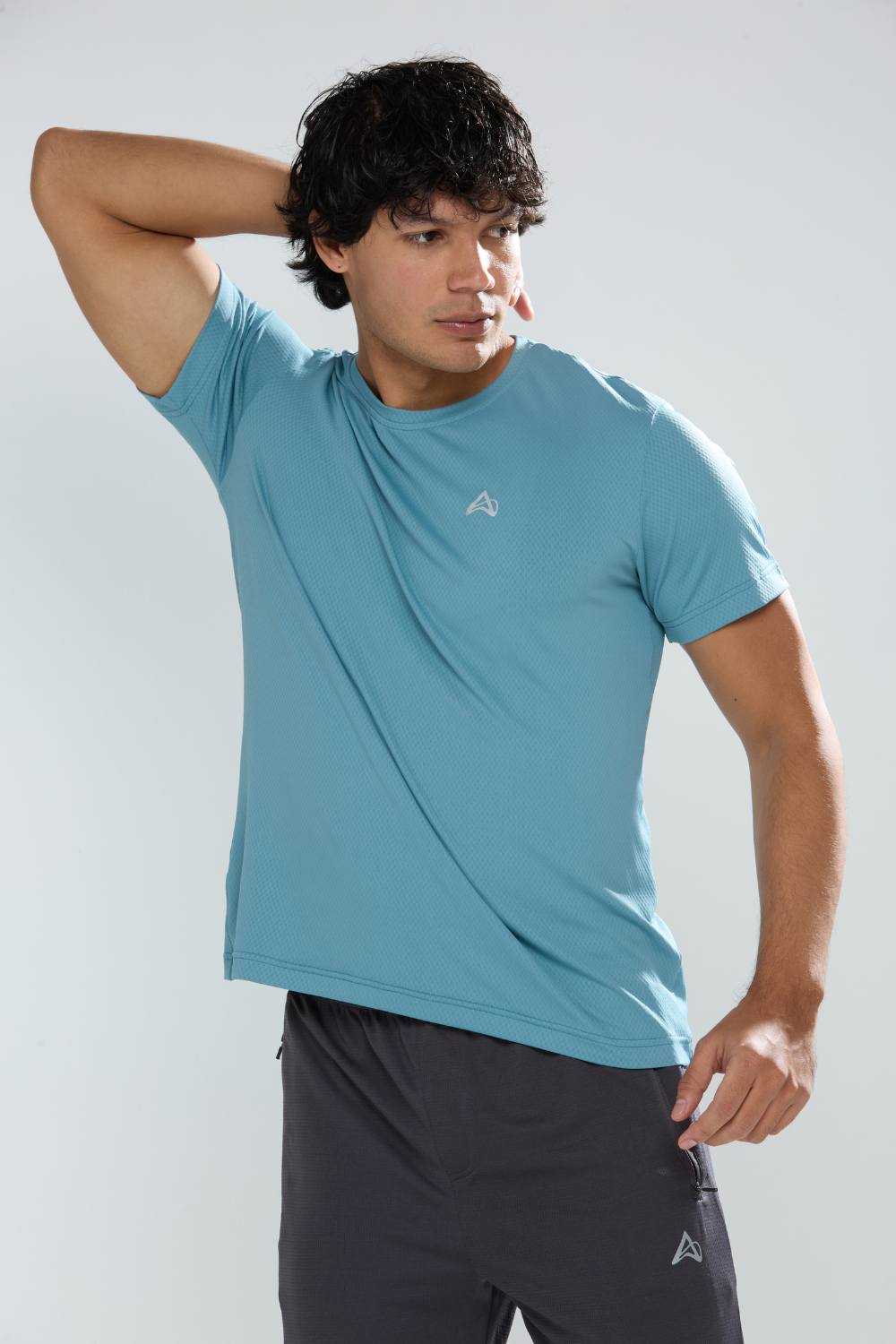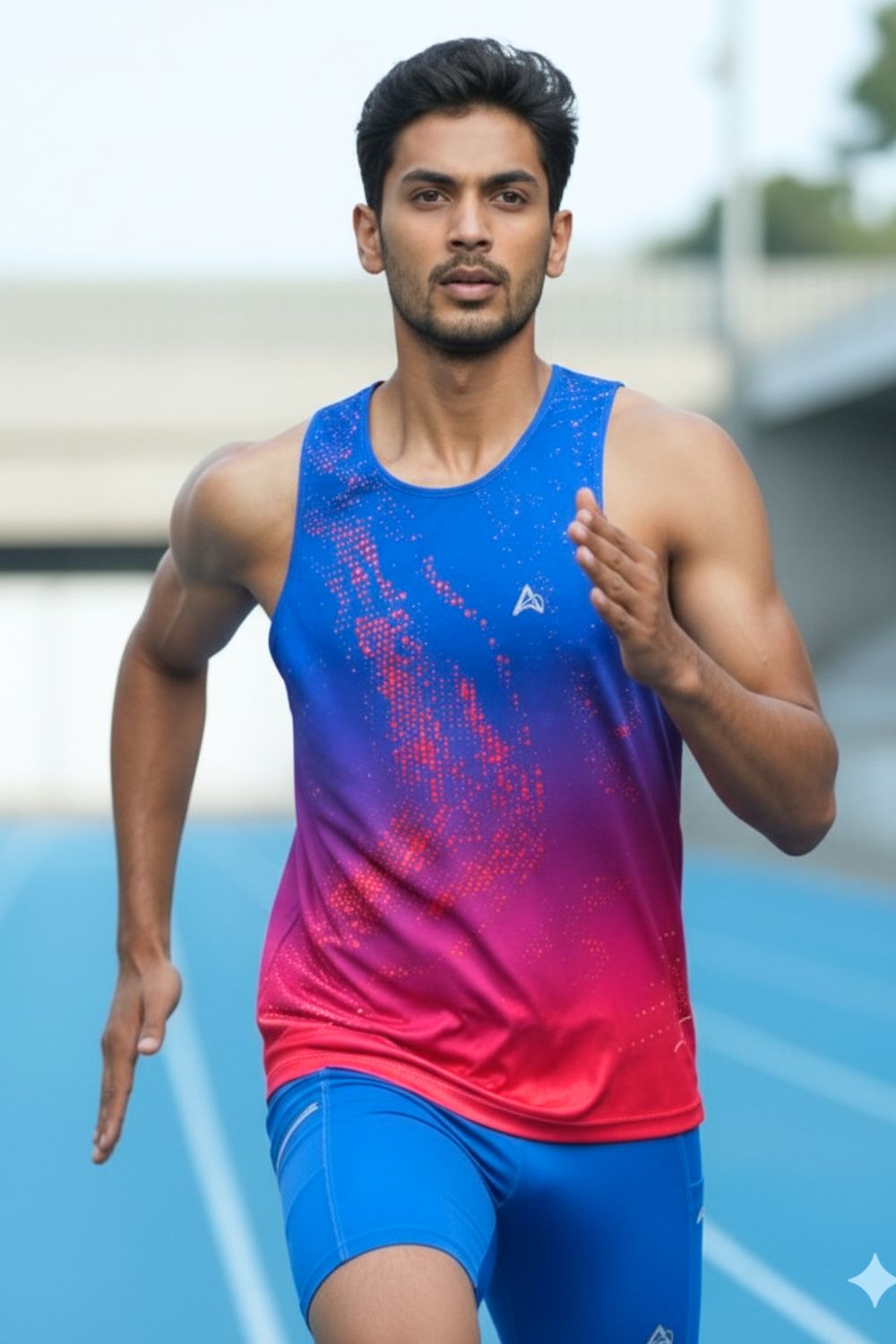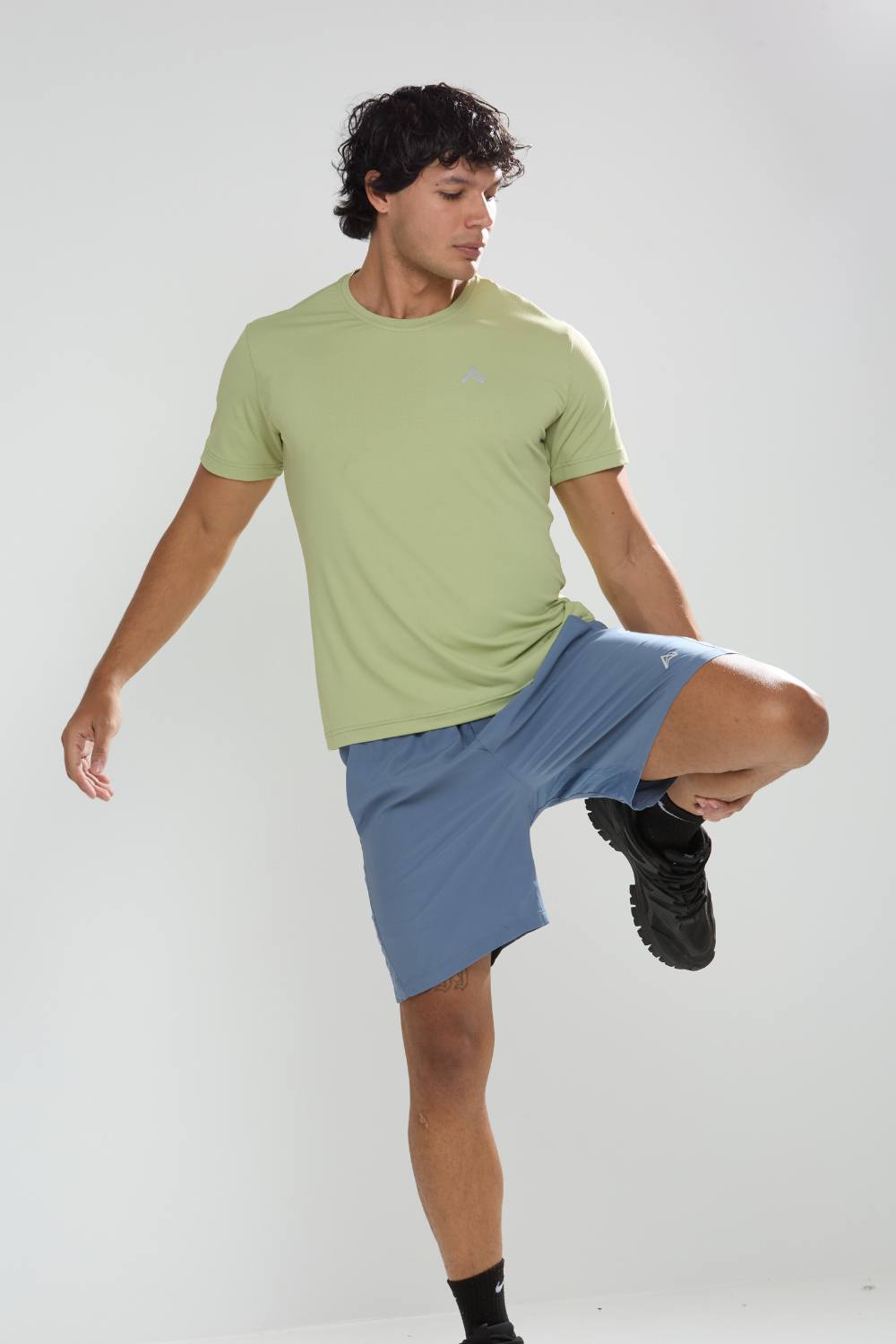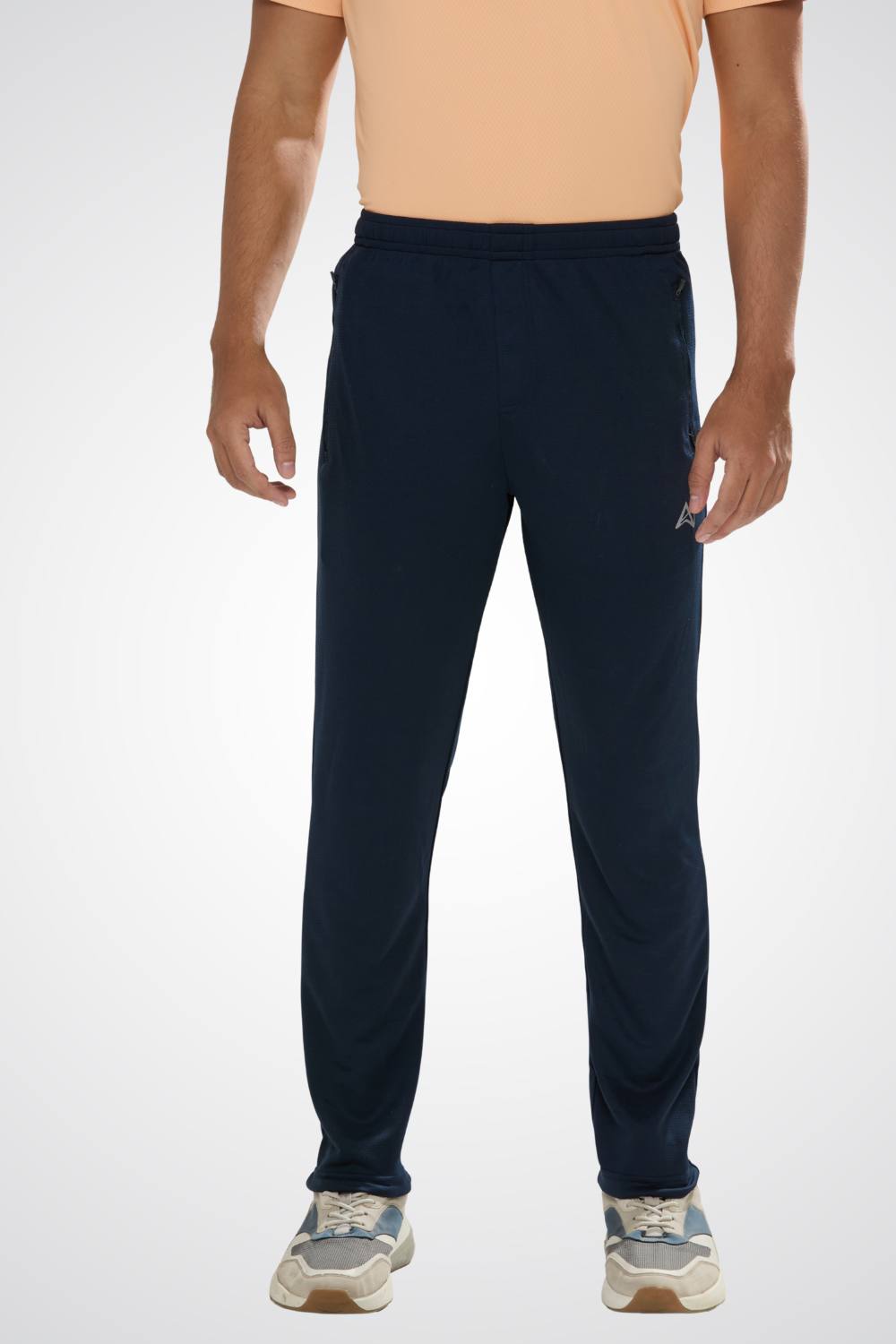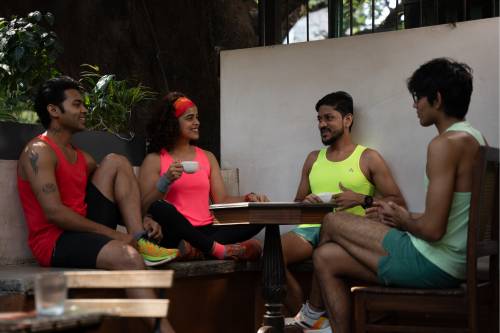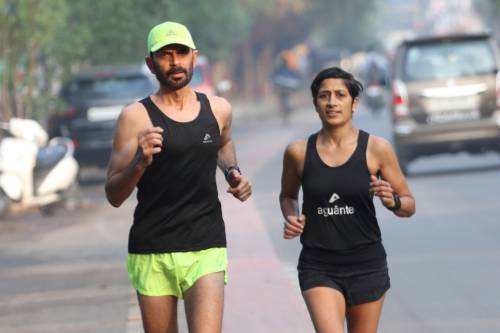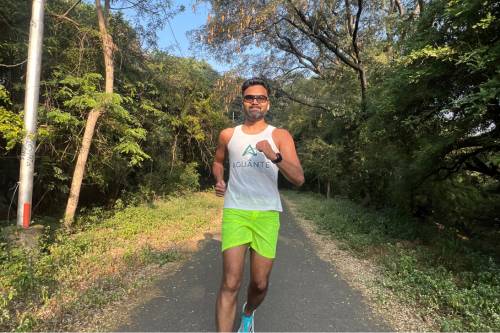Quick Listen:
In the early morning mist along Mumbai's Marine Drive, groups of runners slice through the thick humidity, their paces aligning with the awakening pulse of the metropolis. One experienced marathoner stops briefly to capture an image of his soaked singlet, adding a caption that lauds the anti-chafing seams for enduring a grueling 20-kilometer session. Flip through Instagram feeds, and similar vignettes unfold nationwide from the lush paths of Bangalore's Cubbon Park to the historic trails in Delhi's Lodhi Gardens. Here, dedicated endurance athletes are transforming social platforms into vibrant displays for equipment that truly performs under real conditions. This phenomenon extends beyond mere exercise; it centers on the apparel that enhances each step, making runs more intuitive and effective.
Tired of gear that slows you down? Chafing, soggy fabrics, and missing pockets kill your run's momentum. At Aguante, we're runners who get it. Our high-performance activewear features moisture-wicking fabrics, ergonomic designs, and smart storage to keep you focused. Shop Now!
Indian Marathoners Showcase Ergonomic Running Gear on Instagram
How designs inspired by athletes and genuine narratives on social media are revolutionizing the landscape of performance sportswear in India. At the heart of this shift lies a dynamic trend where runners are abandoning off-the-shelf imports in favor of attire customized for regional hurdles, such as intense heat and irregular surfaces.
Envision a runner in Hyderabad uploading a short video of her dawn dash, focusing closely on the stable pockets in her running shorts that secure her device without any jiggle. Meanwhile, an athlete in Pune shares insights on the reflective strips on his half tights that illuminated his evening route, possibly averting hazards from oncoming vehicles. These posts aren't polished promotions; they're authentic, grassroots testimonials emerging on timelines from Navi Mumbai to Gurugram. Platforms like Instagram, Facebook, and YouTube have evolved into virtual arenas where Indian marathon enthusiasts evaluate, critique, and applaud ergonomic equipment. Within this ecosystem, companies such as Aguante are rising to prominence, providing specialized items like running singlets for men, tank tops for women, and t-shirts engineered with fabrics that efficiently manage moisture in India's harsh weather.
Emerging Trends and Recent Developments
This upswing is far from coincidental. The India running gear market achieved a valuation of USD 2.4 billion in 2024 and is poised to expand to USD 4.8 billion by 2033, advancing at a compound annual growth rate of 7.71 percent over the 2025-2033 period. Driving this expansion are factors including heightened awareness of health benefits, greater involvement in physical exercises, accelerating urban development, rising household incomes, the appeal of casual jogging, the spread of organized races, endorsements from sports figures, and the surge in online shopping. The market breaks down regionally into North, West and Central, South, and East India, with products spanning footwear, apparel, accessories, and trackers, segmented by gender as male, female, or unisex, and distributed via sports stores, large retail outlets, discount shops, digital channels, and more.
Ergonomic innovations are capturing attention, featuring running shorts for both genders with tailored contours, half tights that minimize irritation, and runner-specific t-shirts that swiftly draw away perspiration without adhering to the skin. Social networks magnify these advancements, with Instagram personalities ranging from minimalist footwear advocates to female fitness advocates discussing equipment resilient to dampness and rough landscapes. Consider also the ascent of gear for adventurous pursuits; the broader sports and fitness goods market in India stood at USD 4.88 billion in 2024 and is forecasted to climb to USD 9.96 billion by 2034, progressing at a 7.40 percent CAGR from 2025 onward. This growth stems from urban expansion, elevated health mindfulness, higher earnings enabling personal workout investments, trends propelled by influencers, and national campaigns like the Fit India Movement. Notable brands including Decathlon, FITTYFY, and Cultgear provide options from budget-friendly to high-end for residences and fitness centers, while adventure segments thrive with activities like hiking and cycling.
Wearable devices are integral to this narrative. The fitness tracker sector in India generated USD 2,610.4 million in revenue during 2024, with projections to attain USD 7,656.1 million by 2030 at a 19.8 percent CAGR from 2025 to 2030. Smart watches dominated as the top revenue source in 2024, while smart bands are anticipated to exhibit the swiftest expansion. Leading entities encompass Apple Inc., Fitbit, Garmin Ltd., Samsung Electronics Co Ltd., Fossil Group Inc., Ambiotex, and Huawei Technologies. On a wider scale, the wearable technology market was assessed at USD 4.65 billion in 2023, escalating to USD 6.1 billion in 2024 and targeting USD 83.28 billion by 2035 with a 26.83 percent CAGR through 2025-2035. Impetuses include escalating consumer worries over health, prompting uptake of trackers, watches, and monitors amid concerns about chronic ailments. Segments cover wristwear, neckwear, cameras, and eyewear, with technologies like computing and sensors, applied in wellness, electronics, and healthcare.
Real-World Examples and Case Studies
Delve into urban scenes. In Bangalore, participants in long-distance events parade their competition outfits on Instagram, underscoring the protective linings against friction and ample storage in their shorts. Searches uncover Mumbai enthusiasts displaying luminous accents on singlets that shine beneath urban lights. Such attributes are essential, not superfluous, for navigating India's variable jogging environments.
Influencers play pivotal roles in this domain. Figures like barefoot trainer Shanth Koushik narrate experiences with streamlined apparel emphasizing airiness, whereas women athletes associated with @fit_kaur23 stress contours suited for Indian physiques tank tops and tees that synchronize with motion seamlessly. Stamina specialists such as Rajesh Parida or Runholic's Dev detail half tights evaluated amid steamy paths, and Coach Amit Kumar opines on designs boosting efficiency.
Aguante emerges distinctly in these accounts. Diverging from international conglomerates, it engineers clothing attuned to local climates scorching temperatures, moisture-laden air, varied grounds incorporating elements like stable compartments free of bounce and rapid-drying materials. Their Instagram content mirrors this, merging personal anecdotes with item highlights. Relative to rivals, Aguante's emphasis on domestic relevance excels: attire crafted for regional anatomies and pathways, obtainable through Amazon and Myntra, complemented by nationwide complimentary delivery.
This expansion in running substantiates the trend. Per Strava's 2023 analysis, India witnessed a 59 percent year-over-year escalation in group running engagements, with urban hubs like Mumbai, Bangalore, Pune, Hyderabad, and Delhi at the forefront. The Mumbai Marathon attracts upwards of 50,000 entrants annually, and Indian competitors excel in international ultras. Concurrently, the sports apparel sector, valued at USD 673.34 million in 2023, is slated to ascend to USD 1,926.10 million by 2030 at a 16.2 percent CAGR, with specialized wear experiencing robust demand. Indigenous labels like Aguante are bridging voids by supplying mid-tier premium options adapted to indigenous requirements.
Key Challenges, Limitations, and Risks
Not every path is unobstructed. Dominant international names like Nike and Adidas overshadow with vast promotional expenditures, eclipsing emerging entities. Skepticism persists among runners regarding the longevity of domestic products can that singlet withstand repeated launderings? Online hype doesn't invariably yield purchases; a popular share might dissipate sans sustained interest.
Perceptions of cost also pose barriers. Superior ergonomic items may appear expensive, despite being competitively priced against foreign alternatives. In an arena where digital commerce flourishes yet confidence fluctuates, establishing reliability is crucial. Factor in the drawbacks of overseas products ill-matched to local climates friction in dampness or inadequate ventilation and caution prevails. Nevertheless, absent significant complaints for Aguante, their two-week refund window and protected transactions alleviate concerns.
Opportunities, Efficiencies, and Business Impact
Conversely, prospects are plentiful. The influencer network on Instagram facilitates natural exposure, as joggers favor fellow user's opinions over commercials. Aguante capitalizes here, accentuating unique aspects like validated silhouettes and visibility aids that ensure security and concentration.
Operational advantages arise from indigenous creativity: equipment optimized for local excursions at fair rates, surpassing undifferentiated sportswear. Across areas like Bangalore or Delhi, uptake intensifies with forming collectives. Commercially, pan-Indian gratis transport and straightforward refunds cultivate allegiance. The encompassing fitness equipment market registered USD 792.70 million in 2024, anticipating USD 1,869.15 million by 2033 at a 10 percent CAGR. This parallels advancements in domestic configurations that augment running tools, fueled by awareness, gym enrollments, home trends, tech fusions, workplace health schemes, official drives, endorsements, online proliferation, luxury demands, and innovations like AI coaching and app linkages.
Aguante's objective to bolster stamina sportspeople manifests in tangible effects. Through meticulous attention to features like friction prevention and ideal adjustments, they elevate jogging experiences, nurturing a network where each update motivates another enthusiast.
Future Outlook
As more imprints mark India's green spaces and digital streams brim with equipment stories, the core lesson resonates: genuineness prevails. Amid an enlarging marathon framework, entities merging ergonomic ingenuity, communal validation, and regional acumen will dominate. Founded in 2018, Aguante exemplifies this ethos superior attire encompassing shorts, singlets, and pants, marketed digitally and via chosen stores.
Prospectively, enhanced social trading via Instagram and Facebook outlets could intensify interactions. Lines dedicated to women may capitalize on escalating needs, establishing Aguante as the nation's premier for sustained athletics. In a country where jogging transcends fitness embodying a societal shift the appropriate attire is indispensable. It represents the progression to grander aspirations. Explore further in narratives like India's Running Boom, yet the true dynamism unfolds on trails and screens.
Frequently Asked Questions
What makes ergonomic running gear suitable for Indian marathoners?
Ergonomic running gear for Indian marathoners is specifically designed to handle the country's challenging climate conditions, including intense heat, high humidity, and varied terrain. Key features include moisture-wicking fabrics that prevent chafing, stable pockets that secure devices without bouncing, reflective strips for safety during evening runs, and tailored fits that accommodate Indian body types. Brands like Aguante are leading this trend by creating locally-adapted gear that performs better than generic international options in India's unique running environments.
How big is the Indian running gear market and what's driving its growth?
The Indian running gear market was valued at USD 2.4 billion in 2024 and is projected to reach USD 4.8 billion by 2033, growing at a 7.71% CAGR. This growth is driven by increased health awareness, greater participation in physical activities, rising disposable incomes, urbanization, the popularity of organized races, celebrity endorsements, and the boom in online shopping. The market includes footwear, apparel, accessories, and fitness trackers, distributed through both physical stores and digital channels.
Which Indian running gear brands are gaining popularity on social media?
Aguante has emerged as a standout Indian running gear brand gaining traction on social media platforms like Instagram. Unlike international giants, Aguante focuses on creating locally-relevant products such as running singlets, tank tops, and shorts designed specifically for Indian climates and body types. The brand leverages authentic user-generated content and influencer partnerships with figures like barefoot trainer Shanth Koushik and fitness advocates like @fit_kaur23 to showcase real-world performance of their moisture-wicking, anti-chafing gear on Indian running routes.
Disclaimer: The above helpful resources content contains personal opinions and experiences. The information provided is for general knowledge and does not constitute professional advice.
You may also be interested in: Why Indian Marathoners Prefer Lightweight Running Gear
Tired of gear that slows you down? Chafing, soggy fabrics, and missing pockets kill your run's momentum. At Aguante, we're runners who get it. Our high-performance activewear features moisture-wicking fabrics, ergonomic designs, and smart storage to keep you focused. Shop Now!
Powered by flareAI.co





